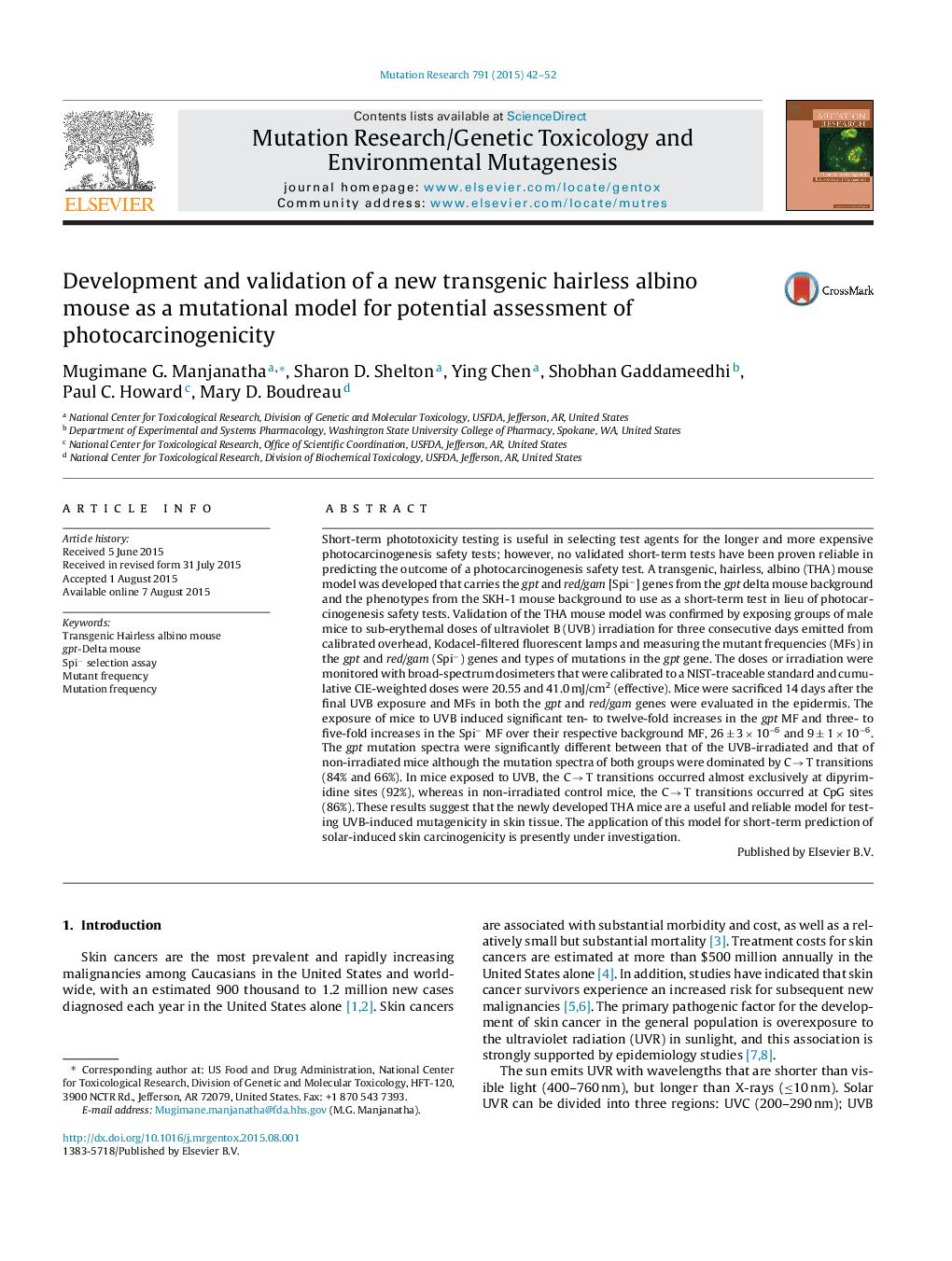| Article ID | Journal | Published Year | Pages | File Type |
|---|---|---|---|---|
| 8456341 | Mutation Research/Genetic Toxicology and Environmental Mutagenesis | 2015 | 11 Pages |
Abstract
Short-term phototoxicity testing is useful in selecting test agents for the longer and more expensive photocarcinogenesis safety tests; however, no validated short-term tests have been proven reliable in predicting the outcome of a photocarcinogenesis safety test. A transgenic, hairless, albino (THA) mouse model was developed that carries the gpt and red/gam [Spiâ] genes from the gpt delta mouse background and the phenotypes from the SKH-1 mouse background to use as a short-term test in lieu of photocarcinogenesis safety tests. Validation of the THA mouse model was confirmed by exposing groups of male mice to sub-erythemal doses of ultraviolet B (UVB) irradiation for three consecutive days emitted from calibrated overhead, Kodacel-filtered fluorescent lamps and measuring the mutant frequencies (MFs) in the gpt and red/gam (Spiâ) genes and types of mutations in the gpt gene. The doses or irradiation were monitored with broad-spectrum dosimeters that were calibrated to a NIST-traceable standard and cumulative CIE-weighted doses were 20.55 and 41.0 mJ/cm2 (effective). Mice were sacrificed 14 days after the final UVB exposure and MFs in both the gpt and red/gam genes were evaluated in the epidermis. The exposure of mice to UVB induced significant ten- to twelve-fold increases in the gpt MF and three- to five-fold increases in the Spiâ MF over their respective background MF, 26 ± 3 Ã 10â6 and 9 ± 1 Ã 10â6. The gpt mutation spectra were significantly different between that of the UVB-irradiated and that of non-irradiated mice although the mutation spectra of both groups were dominated by C â T transitions (84% and 66%). In mice exposed to UVB, the C â T transitions occurred almost exclusively at dipyrimidine sites (92%), whereas in non-irradiated control mice, the C â T transitions occurred at CpG sites (86%). These results suggest that the newly developed THA mice are a useful and reliable model for testing UVB-induced mutagenicity in skin tissue. The application of this model for short-term prediction of solar-induced skin carcinogenicity is presently under investigation.
Keywords
Related Topics
Life Sciences
Biochemistry, Genetics and Molecular Biology
Cancer Research
Authors
Mugimane G. Manjanatha, Sharon D. Shelton, Ying Chen, Shobhan Gaddameedhi, Paul C. Howard, Mary D. Boudreau,
